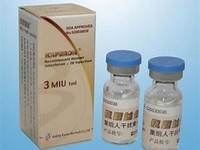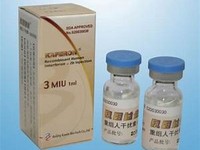tinzaparin sodium

CLINICAL USE
Peri- and postoperative surgical thromboprophylaxis Treatment of DVT and pulmonary embolism Prevention of thrombus formation in extracorporeal circulation duringDOSE IN NORMAL RENAL FUNCTION
General surgery: (low-moderate risk) 3500 IU daily Orthopaedic surgery: (high risk) 50 IU/kg or 4500 IU daily DVT and PE: 175 IU/kg bodyweight once daily for at least 6 days and until adequate oral anticoagulation is establishedPHARMACOKINETICS
DOSE IN RENAL IMPAIRMENT
GFR (mL/MIN)
DOSE IN PATIENTS UNDERGOING RENAL REPLACEMENT THERAPIES
IMPORTANT DRUG INTERACTIONS
Potentially hazardous interactions with other drugsReconstition
–Route
SC injection IV bolus/infusionRate of Administration
Comments
–OTHER INFORMATION
Tinzaparin is also indicated for prevention of clotting in the extracorporeal circulation during haemodialysis Dose for >4 hr session: IV bolus — (into arterial side of the dialyser or intravenously) of 3500–4500 IU Dose for <4 hr session: IV bolus of — 2500 IU Additional tinzaparin (500–1000 IU) may be given if concentrated RBCs or blood transfusions are given during dialysis, or additional treatment beyond the normal dialysis duration is employed Determination of plasma antifactor-Xa may be used to monitor the tinzaparin dose during haemodialysis; plasma antifactor-Xa, one hour after dosing should be within the range 0.4–0.5 IU/mL. Heparin can suppress adrenal secretion of aldosterone leading to hyperkalaemia particularly in patients with chronic renal impairment and diabetes mellitus Low molecular weight heparins are renally excreted and hence accumulate in severe renal impairment. While the doses recommended for prophylaxis against DVT and prevention of thrombus formation in extracorporeal circuits are well tolerated in patients with CKD 5, the doses recommended for treatment of DVT and PE have not yet been verified as safe. LMWHs have been associated with severe, sometimes fatal, bleeding episodes in such patients. Hence the use of unfractionated heparin would be preferable in these instances Information from Leo Pharma states that tinzaparin can safely be used in elderly patients with a GFR>20 mL/min for 10 days without any accumulation (Nagge J. Is impaired renal function a contraindication to the use of low-molecular weight heparin? Arch Intern Med. 2002; 162: 2605–09.) (Siguret V. Elderly patients treated with tinzaparin (Innohep) administered once daily (175 anti-Xa IU/kg): anti-Xa and anti-IIa activities over 10 days. Thromb Haemostat. 2000; 84: 800–04.) Additional doses may be required if using LMWHs for anticoagulation in HDF Use 1 mg of protamine for every 100 anti-Xa IU to neutralise the effects of tinzaparin. If prothrombin time is still raised 2–4 hours later, give 0.5 mg/kg infusion of protamine . TioGUAninE 729 Tioguanine
See how to identify renal failure stages according to GFR calculation
See how to diagnose irreversible renal disease
Home
.JPG)







